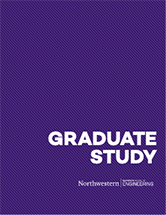The Future of AI-Enhanced Education
Far from being fearful of artificial intelligence’s role in the classroom, MSAI director Kristian Hammond lays out his vision for how it could improve instruction for students and teachers alike.
In the 1986 film “Ferris Bueller’s Day Off,” a teacher portrayed by Ben Stein stands in front of a high school class and monotonously drones: “In 1930, the Republican-controlled House of Representatives, in an effort to alleviate the effects of the … anyone? Anyone?” while his students respond with blank stares and sleep-induced drool puddles on their desks.
Kristian Hammond empathizes with his fictional professorial colleague and the bored students and wants to craft a world in which this never happens again.
Hammond is the director of Northwestern Engineering's Master of Science in Artificial Intelligence (MSAI) program. In that role, he is paying close attention to the impact artificial intelligence (AI) is having on a variety of professions – including his own.
Hammond believes AI can improve the lives of students and teachers alike, turning education into less of a lecture-driven information dump and more of a collaborative interaction driven by ideas.
“There are certain elements of teaching that are dehumanizing to the teachers. Giving the same lecture over and over and over again … why do we do that to a human being?” Hammond said. “There's no soul in that. We can get rid of that.”
AI is the tool to create that future, Hammond believes. Far from the highly publicized fears in the wake of OpenAI’s release of ChatGPT that centered on keeping AI out of the classroom, Hammond said it should be embraced.
Hammond believes technology, including AI, can help with fact-focused instruction so teachers and students have more time to do what only humans can do – give concepts meaning and context. To explain what he’s talking about, Hammond uses an example from his own evolution as a professor.
“There are some lectures I used to give that I just don't do anymore. I have recordings of a set of lectures. I know what I want to say and I know what I want students to know,” he said. “If I set things up so that they can watch the recordings independently, we can have a discussion about the ideas in class instead of making them sit there and watch me talk?”
As Hammond envisions it, AI could help impart information in a manner much more personalized to each student’s learning style.
For example, an AI system teaching students geometry could pull examples to explain the concepts from each student’s stated interest. For one student, that might be football. For another, it could be through ballet. Whatever the examples, the result would be more relevant instruction for each individual student.
This doesn’t make teachers irrelevant, Hammond said. In fact, it makes them even more valuable because their time is spent more effectively talking with students about the big-picture ideas at the foundation of important learning. It's a model Hammond believes could be instilled throughout the education field, not just in higher ed.
Hammond also addresses one of the main concerns about large language models such as ChatGPT – that these models sometimes return responses that are wrong.
“We need to think of ways for these technologies to amplify rather than replace thought,” he said. “Ask questions rather than give answers. Review rather than write. Comment on the work rather than do it. In this world, their accuracy is less important than the fact they get you to think.”
This, Hammond cautions, is not a “now” thing. Rather, it’s a roadmap for the future that he presents as an alternative to the doom-and-gloom he sometimes hears when people talk about AI and education.
“This could give professors a reach the likes of which they have never been able to imagine,” he said. “But it will only work if they are part of the process, because the way you humanize the machine is you have humans guiding the machine and telling it what to do. These are the beginning phases.”

